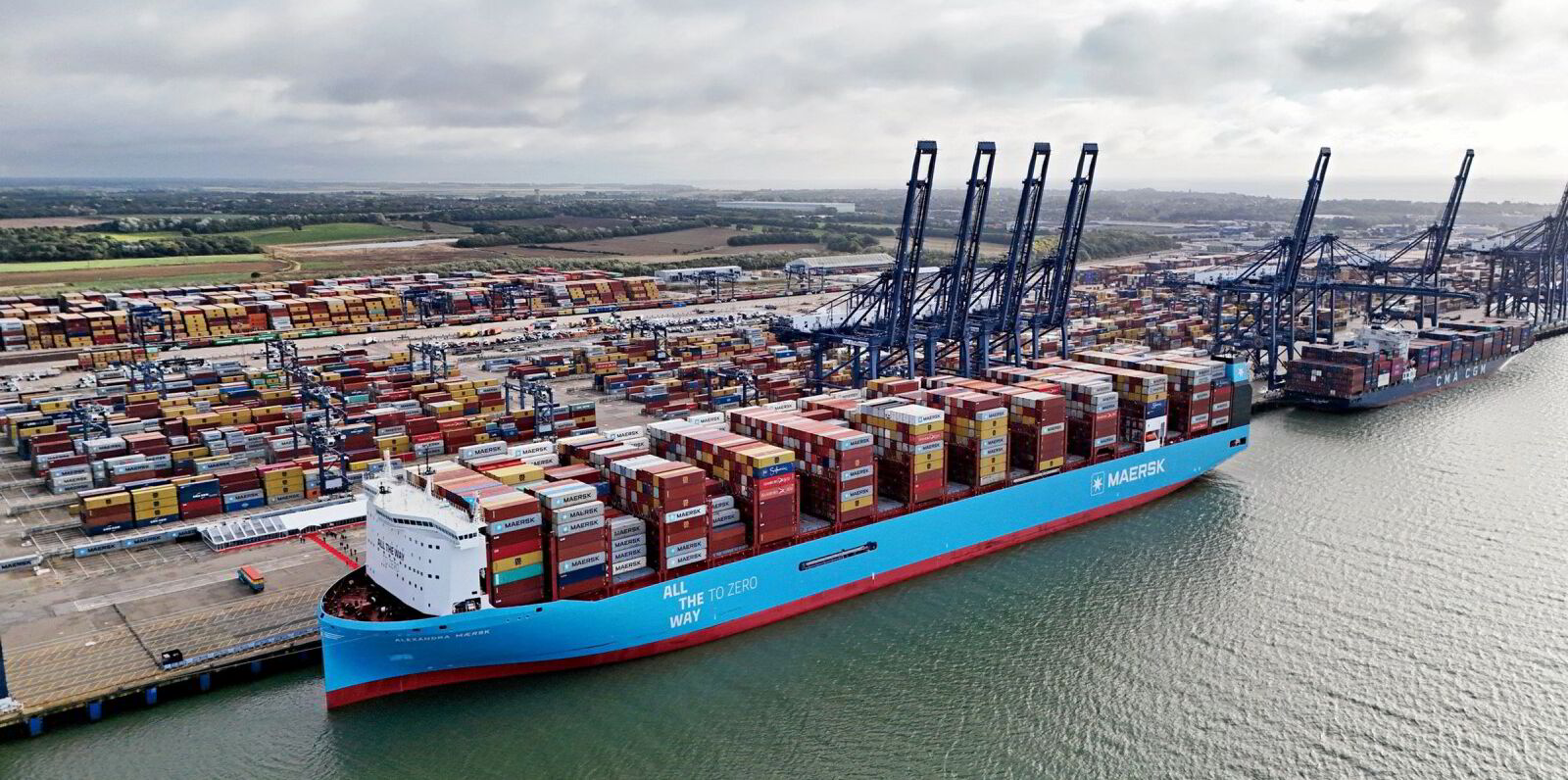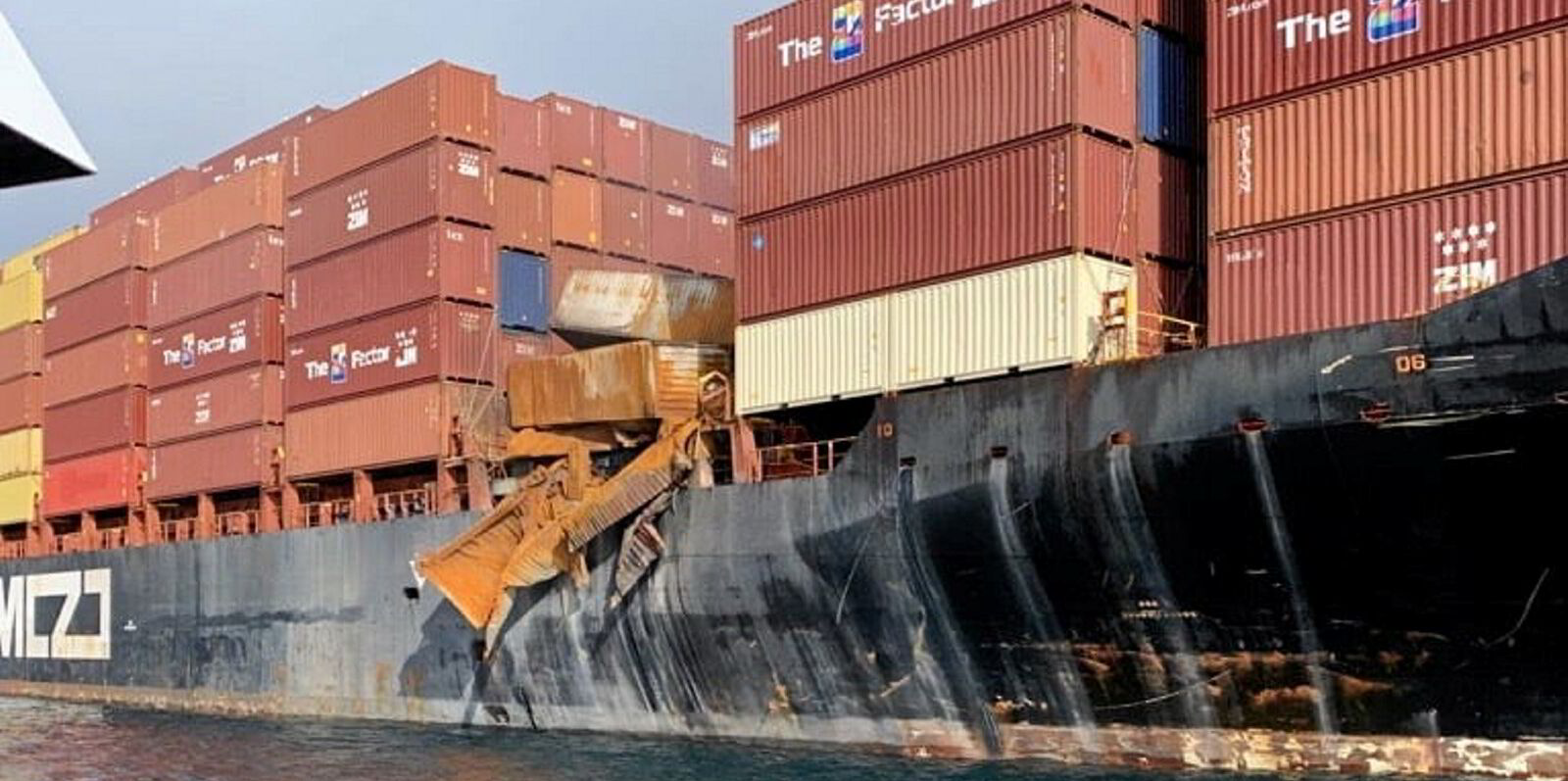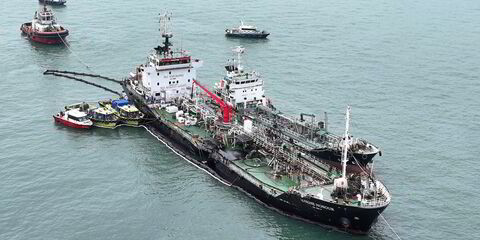The full reopening of the Suez Canal could trigger two months of “operational meltdown” as container ships converge at European ports, a senior AP Moller-Maersk executive has warned.
Vessels from Asia taking the longer Cape of Good Hope route will arrive in Europe at the same time as ships that leave a fortnight later but take advantage of the shorter Red Sea passage, chief commercial officer Karsten Kildahl told TradeWinds.
Kildahl said the extent of significant disruption would be greater than many people expected before trading settled down again. He said that it was not feasible for some vessels to slow steam through the Suez Canal to limit the disruption.
“You’re going to have waiting time, you’re going to have terminals that are going to be backed up, we’re going to have a shortage of trucking capacity, handling capacity, gate capacity and so on,” he said.
“If things go the way that I think, we will have havoc for a couple of months once the canal opens again.”
The prospects of that happening in the short term appear unlikely with tensions high in the Middle East amid Israel’s continuing attacks against targets in Lebanon.
Major shipping lines have switched to the Cape of Good Hope route to avoid the risk of being targeted by Houthi missile strikes in the Red Sea.
The Iran-backed group said it was targeting vessels linked to Israel, the US and the UK and fleets where ships have previously made Israel port calls. But other ships have been hit based upon incorrect information and poor targeting, according to security experts.
In light of the security situation, Hapag-Lloyd and Maersk announced on 9 October that their new alliance from Asia to Europe and the US would go around Africa when it launches in February.
Kildahl said the schedule would remain under review but added that businesses had made clear that they did not want any “flip-flopping”, with repeated switches between routes based on changing security reports.
“If you think it was a nightmare for operations when the canal closed, it’s nothing compared to what it’s going to look like when it opens again,” he told reporters at Felixstowe, England, at the naming ceremony of the methanol dual-fuelled 16,000-teu Alexandra Maersk (built 2024) on 9 October.

“We will have several weeks, and I would even claim a couple of months, where you have something that will look like an operational meltdown. It’s not going to be smooth.”
But Kildahl said that while a switch back to the Red Sea would save emissions and an extra 8,000 km from the cape route, the current situation meant that the long haul was likely to be the reality for some time.
The decision by the two companies could provide support for container charter and freight markets, as the longer route requires more vessels.
The Cape of Good Hope network to be operated by the Gemini Cooperation partners will require a fleet of about 340 vessels with a total capacity of 3.7m teu.
That is about 40 more vessels than would have been required had trading resumed around the Red Sea.(Copyright)
Read more
- Eye of the storm: Can shipping cope with a more tempestuous planet?
- Maersk and Hapag-Lloyd to stay away from Houthi-threatened Red Sea in 2025
- Red Sea riches: Chinese giant Cosco tips boxship earnings to jump 280% to $3.4bn
- How to avoid Houthi missile strikes: One critical decision makes ships significantly more likely to be hit
- Blaze on Greek tanker attacked by Houthis almost out after seven weeks of firefighting





